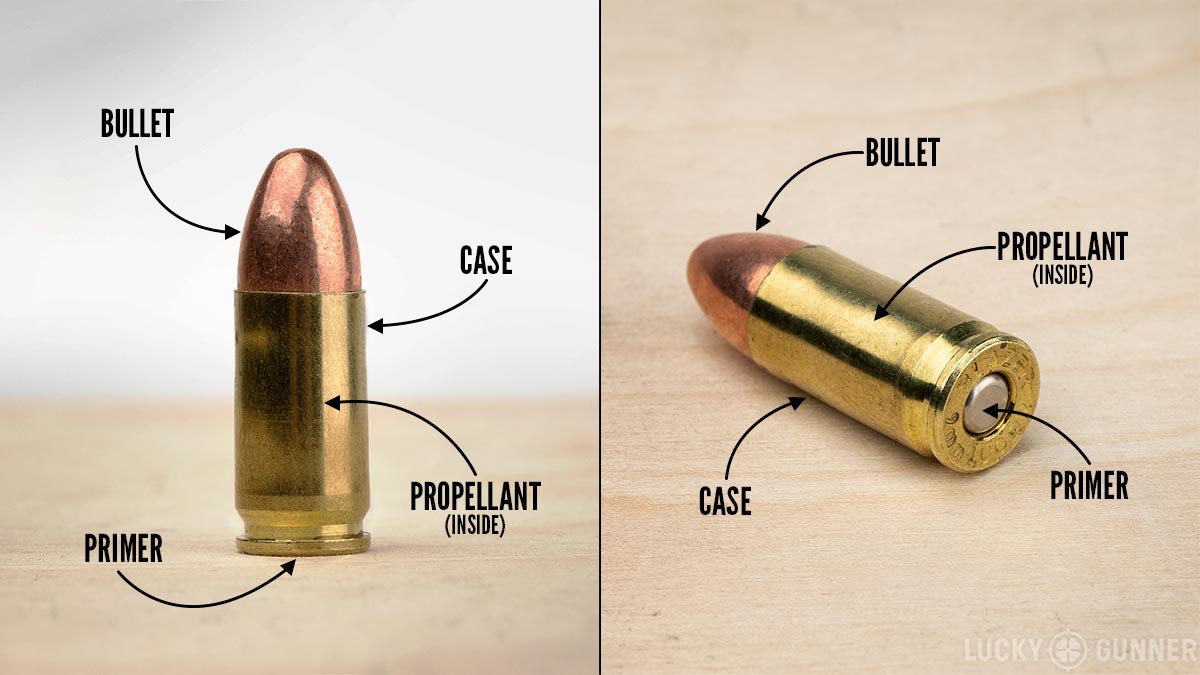How Ammunition Pro Llc can Save You Time, Stress, and Money.
How Ammunition Pro Llc can Save You Time, Stress, and Money.
Blog Article
5 Easy Facts About Ammunition Pro Llc Explained
Table of ContentsThings about Ammunition Pro LlcAn Unbiased View of Ammunition Pro Llc6 Simple Techniques For Ammunition Pro LlcLittle Known Facts About Ammunition Pro Llc.Our Ammunition Pro Llc Statements
The standard components of ammunition are the exact same for rifle, handgun, and shotgun ammunition. Understanding how ammunition works is a crucial facet in being an accountable weapon owner. Today we're looking at the what the basic components of ammunition are and how they collaborate to discharge a round. The standard components of ammunition revealed on a 9mm. Online Ammunition Store round.It houses the guide and powder. The bullet is seated outdoors end of the case. When you fire a bullet out of a semi-auto gun, the gun's extractor raises the instance from the shooting chamber and it flies out of the gun. The instance is likewise occasionally referred to as shells, brass, or casings.
A gun's shooting pin strikes a cartridge's primer. The guide is located in the edge of the situation of a rimfire cartridge.
What Does Ammunition Pro Llc Mean?
Gunpowder following to the case that typically has it. It is normally a blend of saltpeter, charcoal, and sulfur.
We call the projectiles for shotshells, which we fire via shotguns, slugs and shot. Currently that you have a basic understanding of the fundamental components of ammunition, you can feel a bit more confident in exactly how your weapon and ammunition feature!.
7 Easy Facts About Ammunition Pro Llc Shown
Stay on top of Special Deals, Development Notice of Sales, and Shop Occasions
Fun truth: Grains are made use of to describe the mass of a bullet because right back in the very early days of firearms, it was a dispenser's device of measurement, and a common denominator was needed to figure out just how much lead to utilize to make actors lead bullets (Firearm Ammunition). 'Grains' as a device of step for weight goes all the method back to old times, and represents the weight of a grain of wheat

(https://www.moptu.com/ammunitiondde)For recommendation, the weight of a paper clip is about 16 gr. We understand that grains are a step of mass, and extra = heavier, and heavy is good? Yes, heavy is good, but mass of the projectile isn't the only point you need to take into consideration when picking a round for your gun.
A Biased View of Ammunition Pro Llc
Fun truth, this is the beginning of the term "Rifle" ex-spouse. The result this spin has on projectiles is a supporting one the bullet rotating keeps the nose directed directly, in the exact same means that a perfectly spiraled football toss is going to be a lot extra secure and precise in flight than an unsightly duck, end over end toss.
Just how does this connect to grain weight? Visualize you're on one of those playground slide carousels, the ones with bars you hold on to while it spins.
Or when it comes to the carnival adventure, you start to really feel larger. The even more mass you have (weight), the more you will feel this impact. The same result occurs with bullets. The heavier the projectile, the more effect a quicker spin will carry it. This is why you tend to see slower twist prices for larger, slower projectiles, and much faster spin prices for lighter, greater speed projectiles.
Rumored Buzz on Ammunition Pro Llc
Yet there's another element that we need to think about when selecting a grain weight for our ammunition. As hinted at above, bullet velocity, or the rate of the projectile, is a major element when figuring out the most effective grain weight projectile to utilize. Rate is influenced by a few significant variables, including the kind and quantity of propellant (gunpowder), barrel length, and bullet weight.

One of the most usual grain weight rounds for 9x19mm cartridges are 115gr and 124gr. These are normally lead core, completely jacketed (FMJ) rounds. Both of these grain weight cartridges will execute well in factory 9mm hand guns, to typical gun ranges (as much as 50 yards). 115 grain rounds are the most usual (and consequently least pricey).
Report this page